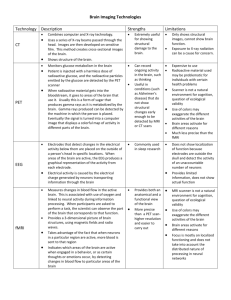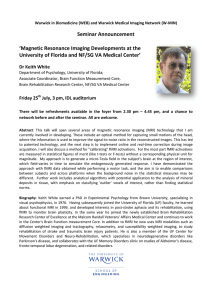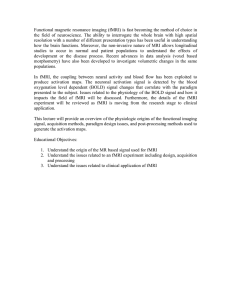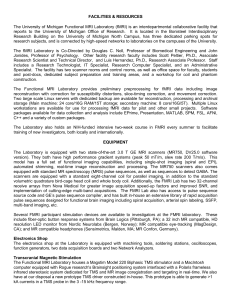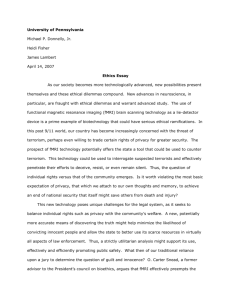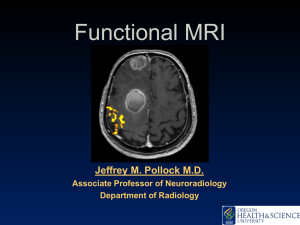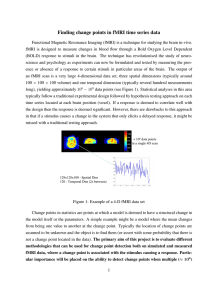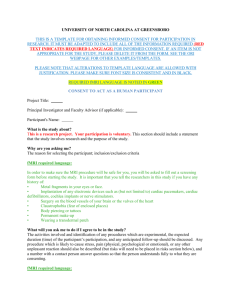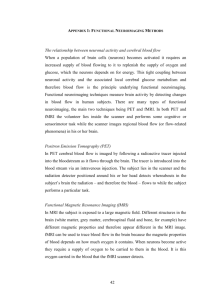Word
advertisement
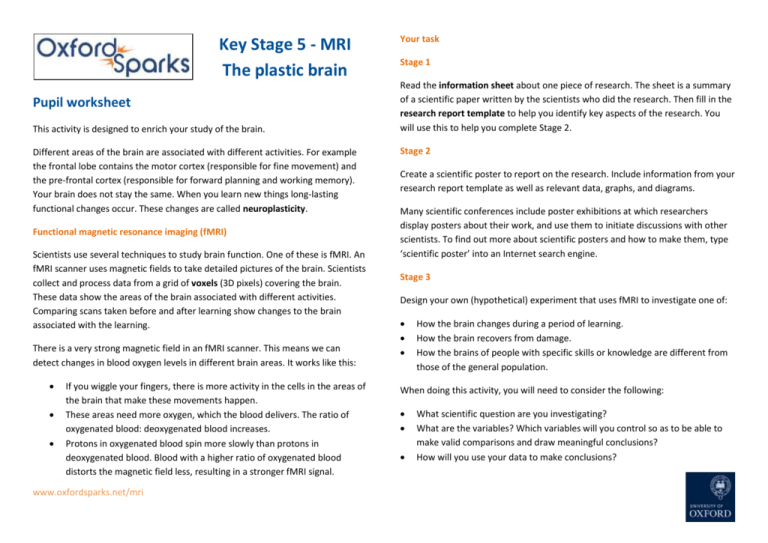
Key Stage 5 - MRI The plastic brain Pupil worksheet This activity is designed to enrich your study of the brain. Different areas of the brain are associated with different activities. For example the frontal lobe contains the motor cortex (responsible for fine movement) and the pre-frontal cortex (responsible for forward planning and working memory). Your brain does not stay the same. When you learn new things long-lasting functional changes occur. These changes are called neuroplasticity. Functional magnetic resonance imaging (fMRI) Scientists use several techniques to study brain function. One of these is fMRI. An fMRI scanner uses magnetic fields to take detailed pictures of the brain. Scientists collect and process data from a grid of voxels (3D pixels) covering the brain. These data show the areas of the brain associated with different activities. Comparing scans taken before and after learning show changes to the brain associated with the learning. There is a very strong magnetic field in an fMRI scanner. This means we can detect changes in blood oxygen levels in different brain areas. It works like this: If you wiggle your fingers, there is more activity in the cells in the areas of the brain that make these movements happen. These areas need more oxygen, which the blood delivers. The ratio of oxygenated blood: deoxygenated blood increases. Protons in oxygenated blood spin more slowly than protons in deoxygenated blood. Blood with a higher ratio of oxygenated blood distorts the magnetic field less, resulting in a stronger fMRI signal. www.oxfordsparks.net/mri Your task Stage 1 Read the information sheet about one piece of research. The sheet is a summary of a scientific paper written by the scientists who did the research. Then fill in the research report template to help you identify key aspects of the research. You will use this to help you complete Stage 2. Stage 2 Create a scientific poster to report on the research. Include information from your research report template as well as relevant data, graphs, and diagrams. Many scientific conferences include poster exhibitions at which researchers display posters about their work, and use them to initiate discussions with other scientists. To find out more about scientific posters and how to make them, type ‘scientific poster’ into an Internet search engine. Stage 3 Design your own (hypothetical) experiment that uses fMRI to investigate one of: How the brain changes during a period of learning. How the brain recovers from damage. How the brains of people with specific skills or knowledge are different from those of the general population. When doing this activity, you will need to consider the following: What scientific question are you investigating? What are the variables? Which variables will you control so as to be able to make valid comparisons and draw meaningful conclusions? How will you use your data to make conclusions? Research report template Results (including tables, graphs, diagrams) Title of paper Authors Journal reference Scientific question What the research shows Variables Independent variable (the one you change) Dependent variable (the one you measure) Control variables www.oxfordsparks.net/mri Your opinion on the research and its value www.oxfordsparks.net/mri
